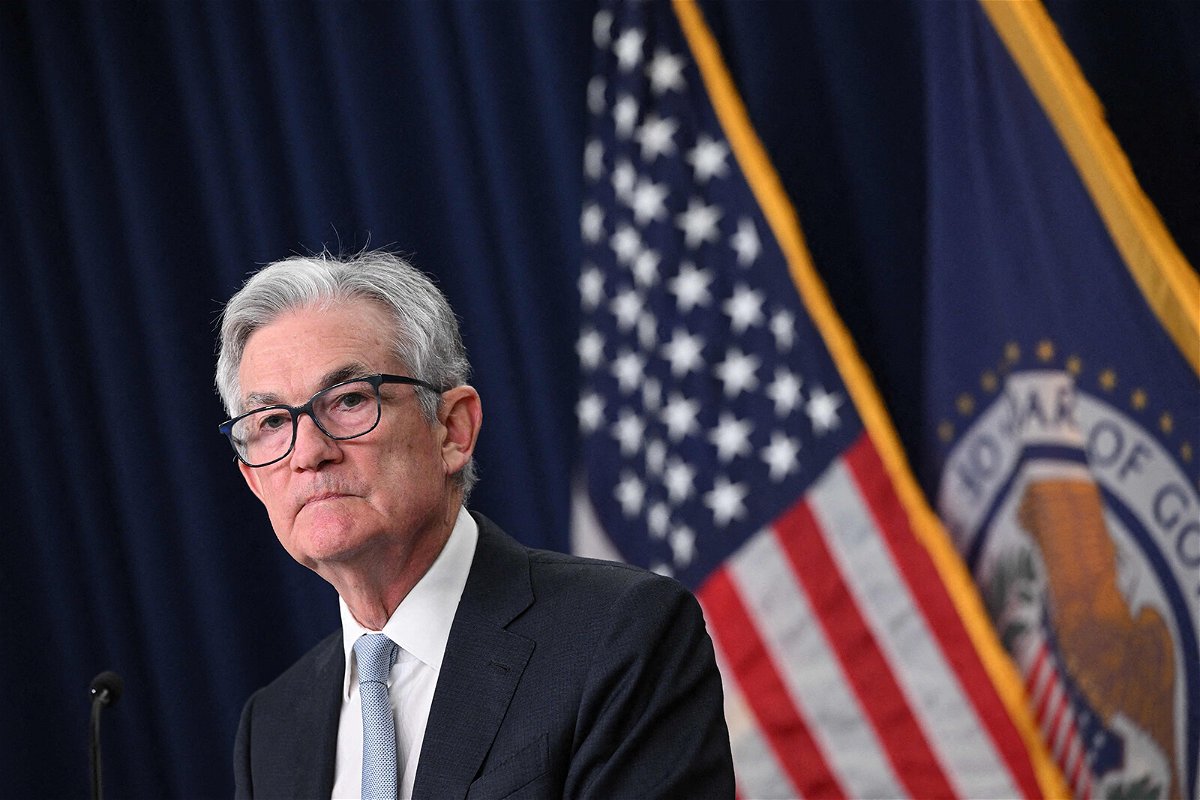Did Jerome Powell just bust the stock market rally?

By Julia Horowitz, CNN Business
Federal Reserve Chair Jerome Powell has the power to make or break markets these days. On Wednesday, he opted to disappoint.
What’s happening: The central bank announced its fourth straight interest rate hike of three-quarters of a percentage point, continuing its aggressive and unprecedented campaign to get inflation under control.
What investors honed in on, however, were Powell’s comments about where interest rates could peak — and how long they could stay there before the Fed changes course.
“The question of when to moderate the pace of increases is now much less important than the question of how high to raise rates and how long to keep monetary policy restrictive,” Powell told journalists. The Fed, he said, “may move to higher levels than we thought.”
That’s causing the market to recalibrate, denting hopes that a meaningful policy pivot could be coming soon.
The backdrop: Given how hard the Fed has already gone — and an expectation it wouldn’t want to overshoot, since rate hikes take time to feed through to the economy — US stocks leaped in October. The Dow rose 14%, logging its best monthly gain since January 1976.
This huge run-up now looks to have been very premature.
The S&P 500 sank 2.5% on Wednesday, while the Dow dropped more than 500 points, shedding 1.6%. Global stocks markets continued to push down on Thursday.
Meanwhile, the US dollar rose and government bond yields — which move opposite prices — climbed. The yield on the 2-year US note is now at its highest level since 2007.
“What we did see was a more hawkish message than markets had anticipated,” Laura Cooper, senior macro investment strategist at BlackRock, told me. “Essentially, it killed the pivot dreams.”
Economic data, particularly for the labor market, still looks relatively strong. US job openings unexpectedly surged in September, with 1.9 for every available worker. The latest jobs report on Friday is expected to show the economy added another 200,000 positions in October — down from last month, but still a very solid number.
Powell said that “incoming data since our last meeting suggests that the ultimate level of interest rates will be higher than previously expected.”
Guillaume Menuet, Citi Private Bank’s head of investment strategy and economics in Europe, the Middle East and Africa, said the recent stock market jump “clearly has the hallmarks of a bear market rally.”
It was built in part, he told me, on the “mistaken expectation of an imminent Fed pivot.” This week, the wake-up call arrived.
The advertising industry is on notice
When Google — the behemoth of the digital ad industry — signals that the business climate is deteriorating, investors sit up and pay attention.
But it’s not the only company to be affected by lower spending as firms pull back in anticipation of a global recession.
“Big advertisers that we traditionally get spend from are not spending this quarter,” Roku CEO Anthony Wood told analysts after the company reported earnings on Wednesday. “They’re not spending with anyone.”
Shares of Roku are down 19% in premarket trading on Thursday after the streaming hardware maker said it expected revenue to drop in the fourth quarter as the economic climate weighs on consumer spending and pushes advertisers to slash their budgets.
“We expect these conditions to be temporary, but it is difficult to predict when they will stabilize or rebound,” it said in a letter to shareholders.
The takeaway: Last year, companies were racing to capitalize on a wave of post-lockdown spending over the holidays. The biggest problem was getting enough merchandise onto shelves. But advertisers are making clear this year will look different.
“This holiday season, given the unique set of environments and characteristics, is probably going to be different than the typical holiday season,” Wood said.
What’s happening with supply chains, anyways?
There are signs that supply chains are finally inching back to normal.
See here: The Global Supply Chain Pressure Index cooked up by the Federal Reserve Bank of New York has been falling sharply since April. Shipping giant Maersk said this week that container shipping rates started dropping toward the end of last quarter “due to weakening customer demand, coupled with markets beginning to normalize with fewer supply chain disruptions” and less congestion.
But companies aren’t out of the woods yet. They’re still dealing with backlogs that are weighing on sales.
Ford saw its October US sales slump 10% over the last year as the company continued to battle supply chain difficulties. It said Wednesday that it sold 158,327 vehicles last month, down from almost 176,000 vehicles in the same period last year.
Remember: The company said in September that it could not finish assembling between 40,000 and 45,000 large SUVs and pickups, as it did not have all the required parts.
In March, the company said it would ship some vehicles without some less crucial computer chips and add them later. Shortages and the rising cost of supplies raised Ford’s expenses by about $1 billion in the third quarter.
My takeaway: Supply chains are complicated and messy, and positive developments won’t feed through the system overnight. We’re not there yet.
The-CNN-Wire
™ & © 2022 Cable News Network, Inc., a Warner Bros. Discovery Company. All rights reserved.